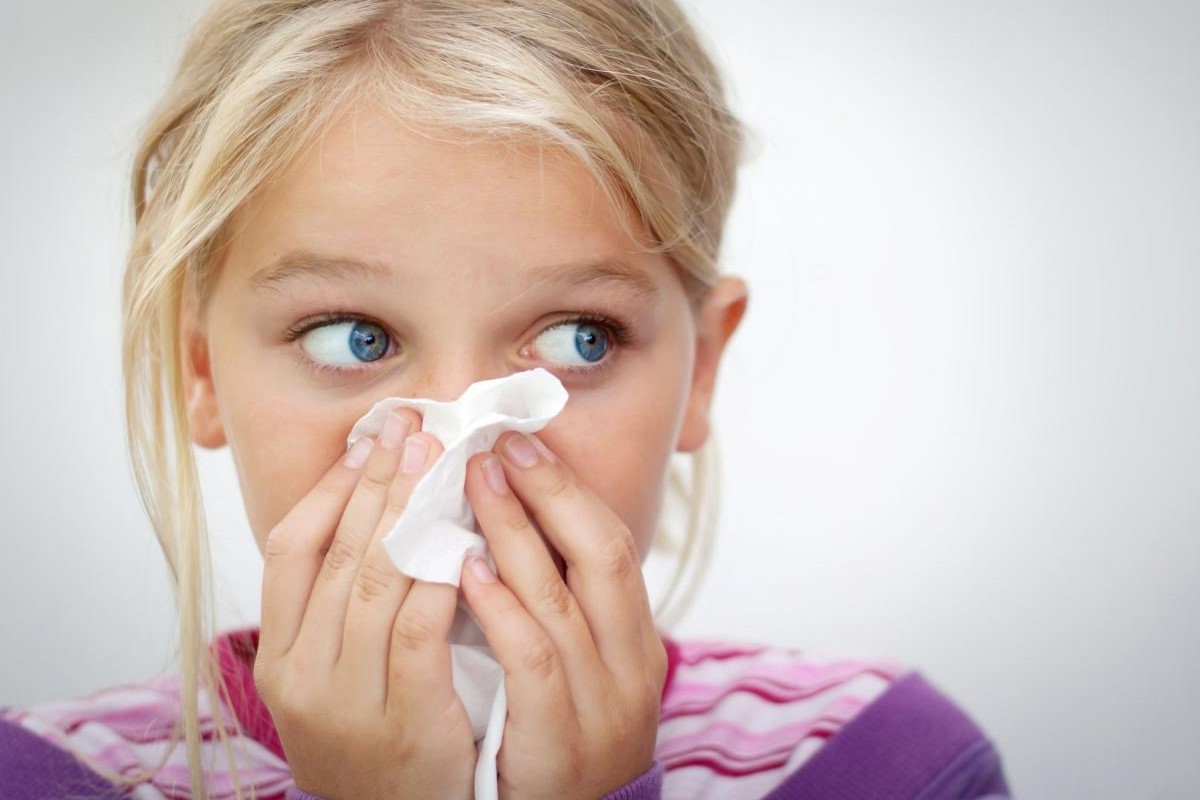
Rhinitis, inflammation of the nasal mucous membranes
What is rhinitis? It is the irritation or inflammation of the nasal mucous membranes. Typical symptoms of this condition are a runny nose, itching and congestion; these are the nose’s natural response to irritation and are often accompanied by pronounced lacrimation
Rhinitis usually lasts about six weeks (acute rhinitis); if it lasts longer it is called chronic rhinitis
The nose normally produces mucus that has the function of trapping germs, pollen, dust and all other particles found in the air we breathe, preventing them from reaching the internal respiratory organs.
When mucus production is abundant, congestion occurs and the mucus itself, instead of flowing towards the throat, flows out through the nose, causing the typical symptom of a continuously runny nose.
Sneezing and itching are the body’s most obvious response to nasal irritation caused most often by cigarette smoke, pollution, pollen, dust and other airborne allergens.
Rhinitis is very often allergic in nature and comes in two forms: seasonal rhinitis and perennial rhinitis
Seasonal rhinitis comes with the arrival of pollen (i.e. in spring, summer and early autumn), while perennial rhinitis affects the patient all year round and is usually caused by hypersensitivity to dust mites, mould and pets.
Causes of rhinitis
When an allergic person inhales an allergen, the immune system attacks this substance, recognising it as foreign to the body.
The allergen binds to immunoglobulin E, which in turn binds to cells that produce histamine.
Histamine dilates the capillaries inside the nose and allows liquid substances to flow into the surrounding tissues, resulting in a runny nose, watery eyes, swelling and itching.
Complications of allergic rhinitis can be infections, sinusitis, cough, headache, sore throat, altered sleep/wake cycle and fatigue.
However, not all rhinitis is caused by allergies
The most common cause is the common cold, scientifically defined as rhinitis of infectious origin.
Most of these infections last only a week and can be contracted mainly in crowded environments (school and pre-school children are most at risk).
A cold begins with a feeling of nasal congestion, accompanied by sneezing and overproduction of mucus.
The cold may worsen with the onset of coughing and fever, but within a week, at most two, the symptoms disappear.
Other rhinitis can be caused by the use of certain medications, physical factors or changes in temperature and humidity.
Nasal decongestants are a good solution to mucus accumulation, but can often disrupt the normal functioning of nasal passages or be addictive.
Cocaine can also cause rhinitis because it alters the functioning of the nose worse than decongestants.
Vasomotor rhinitis
There is another type of rhinitis, called ‘vasomotor rhinitis’, which is affected by odours, cigarette smoke and irritants and chemicals in general; spices used in cooking, alcoholic beverages and certain medications can also induce this condition.
Another trigger for this type of rhinitis is temperature change: there are people who have an overproduction of mucus when they are in the snow or when they leave air-conditioned rooms.
Obviously, no allergen is found in the blood of these people that could explain their symptoms, nor is there any immunoglobulin E present.
The cause is therefore not yet well understood; odours in a certain concentration can cause nasal irritation, while for some people a very low amount is sufficient to trigger the symptoms of rhinitis.
It is therefore believed that vasomotor rhinitis is a paroxysmal reaction to normal nasal reaction to irritants.
As in the case of allergic rhinitis, there is no treatment for vasomotor rhinitis; only prevention of contact with irritants can keep crises and their symptoms under control.
Treatment
The best treatment of rhinitis is prevention of contact with allergens and irritants of the nasal mucous membranes.
If the rhinitis is of allergic origin, the use of antihistamines can certainly help improve symptoms.
Care must be taken when taking these drugs, however, as they induce drowsiness, so they are not recommended when driving or working with potentially dangerous machinery.
Another type of treatment is immunotherapy
An increasing amount of the allergen that triggers the allergy is injected into the patient so that the body gradually gets used to the presence of this substance and no longer considers it as foreign.
Local therapies, on the other hand, are based on the use of decongestants, usually in spray form, to be inhaled directly into the nostrils to block the overproduction of mucus and clear the nose.
Corticosteroids are also prescribed by the doctor to combat the inflammation caused by the allergy, administered as injections or orally.
Nasal surgery, on the other hand, is reserved for those with functional nose problems or chronic sinusitis.
Read Also:
Emergency Live Even More…Live: Download The New Free App Of Your Newspaper For IOS And Android
Acute And Chronic Sinusitis: Symptoms And Remedies
Symptoms And Remedies Of Allergic Rhinitis
Respiratory Or Food Allergies: What Is The Prick Test And What Is It For?
Anaphylactic Shock: What It Is And How To Deal With It
Sinusitis: How To Recognise That Headache Coming From The Nose
Sinusitis: How To Recognise And Treat It
Flu Vaccine For Children? Paediatricians: ‘Do It Now, Epidemic Already Started’


